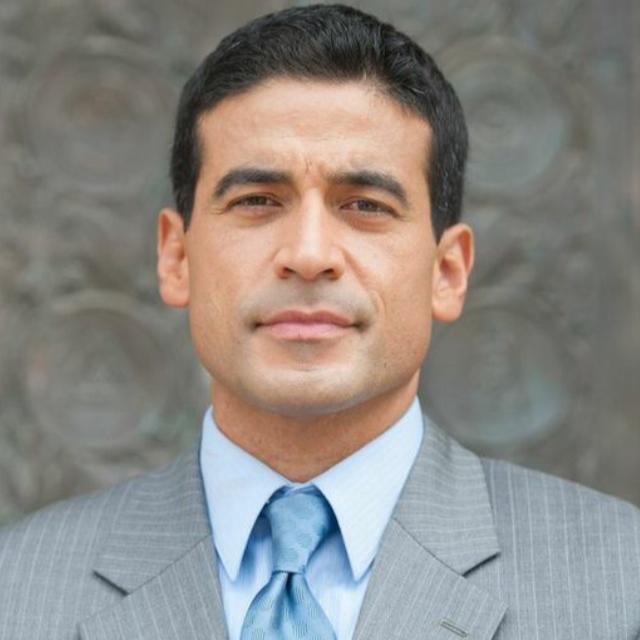New policy in San Antonio could lead to fewer arrests for marijuana possession
After he was elected as Bexar County District Attorney in 2014, Nico LaHood said he would consider implementing cite-and-release for some possession of marijuana charges. Nearly three years later, LaHood proposed a new “catch and release” pilot program that that gives officers discretion to ticket those accused of certain low level offenses, including possession of marijuana […]

After he was elected as Bexar County District Attorney in 2014, Nico LaHood said he would consider implementing cite-and-release for some possession of marijuana charges. Nearly three years later, LaHood proposed a new “catch and release” pilot program that that gives officers discretion to ticket those accused of certain low level offenses, including possession of marijuana less than four ounces, rather than send them to jail.
Although the precise parameters of the program remain unclear (In Justice Today requested the written policy from the DA’s office but received no response), according to the press conference, other crimes that could now be treated like a traffic violation include vandalism or property damage under $500, refusing to pay a bill at a hotel or restaurant if the cost is under $750, and driving with an invalid license. LaHood has said people cited for these crimes would have the chance to participate in community service and attend classes on their violations. If they successfully follow through within 90 days, no criminal charges will ever be filed against them.
There is at least one critical limitation on this program: Discretion rests with the police officer, who can choose whether to arrest the individual or write them a ticket.“(The police officer) has an option, does he want to make that arrest, and it’s completely within the officer’s discretion, or does he want to write a summons,” Lahood said at the press conference announcing the new policy.
The office of the Bexar County Criminal District Attorney has had the ability to implement this program for the last decade, but hasn’t done it until now.
LaHood has touted the benefits of this program, stating that it “will allow officers to stay on our streets and continue to protect our community, [while] help[ing] prevent the overburdening of our criminal justice system.”
But although marijuana possession is legal in a large portion of the country, LaHood described possession as a “poor choice,” claiming that his new policy would “allow the citizen accused an opportunity to learn from a poor choice without having the stigma of an arrest follow them for the rest of their life.”
Cite-and-release could be an important step forward, but it is unclear what effect it will have in Bexar County. First, it will not meaningfully reduce Bexar County’s exploding jail population, which is so overcrowded that the Bexar County Sheriff has been forced to send inmates to a neighboring county.
Sheriff Javier Salazar admitted this policy would not meaningfully reduce that population, because most people charged with marijuana receive a personal recognizance bond. And according to an investigation by a local news affiliate, on average, just 27 people are held on marijuana charges of possessing two ounces or less each month — it is unknown how many are locked up on four ounces.
And because officers have discretion on whether to implement this policy, it could have an even smaller effect. If the officers dislike the person caught with marijuana, they can arrest him. If the officers believe the person is creating a non-arrestable nuisance, perhaps a homeless person is hanging around an area for too long and the police want him gone, they can arrest him. Currently, there is no guidance as to how the officers should exercise that discretion, although Lahood said guidance would be forthcoming.
The parameters of the program also remain unknown. We know that a participant in cite-and-release will have to take a class, but how expensive will that class be? How long will it last? How often during the day will it be offered? What if someone’s job is during the class? Equally important, will there be other limitations on its availability that may prevent people from participating in the program? What if the individual has a record for other offenses, even misdemeanors? Is he still eligible for cite-and-release? What if he is on bond for an outstanding case? These are important questions to ask when evaluating the effects of a program like this.
The San Antonio Police Chief has countered with his own program. Rather than offer cite-and-release to those found with four ounces of marijuana, he recommends officers do so for those found with less than two ounces. Obviously, that would further lessen the impact of a program on the justice system.
Bexar County is the latest area to seek to enact policies to marijuana users out of jail and the criminal justice system. Harris County in Texas recently announced a similar program, with District Attorney Kim Ogg saying her office no longer prosecutes “trace cases” that involve trivial amounts of drugs.
LaHood said he is not a fan of what Harris County is doing, but he did not explain what his objections were beyond saying that the officer in Harris County were essentially giving advice to the people they were ticketing, and he didn’t want to do that in Bexar County.
And LaHood, who recently announced he was running for reelection, could be the key to what happens next. The district attorney stressed the program could be tweaked or eliminated depending on how effective it is.
